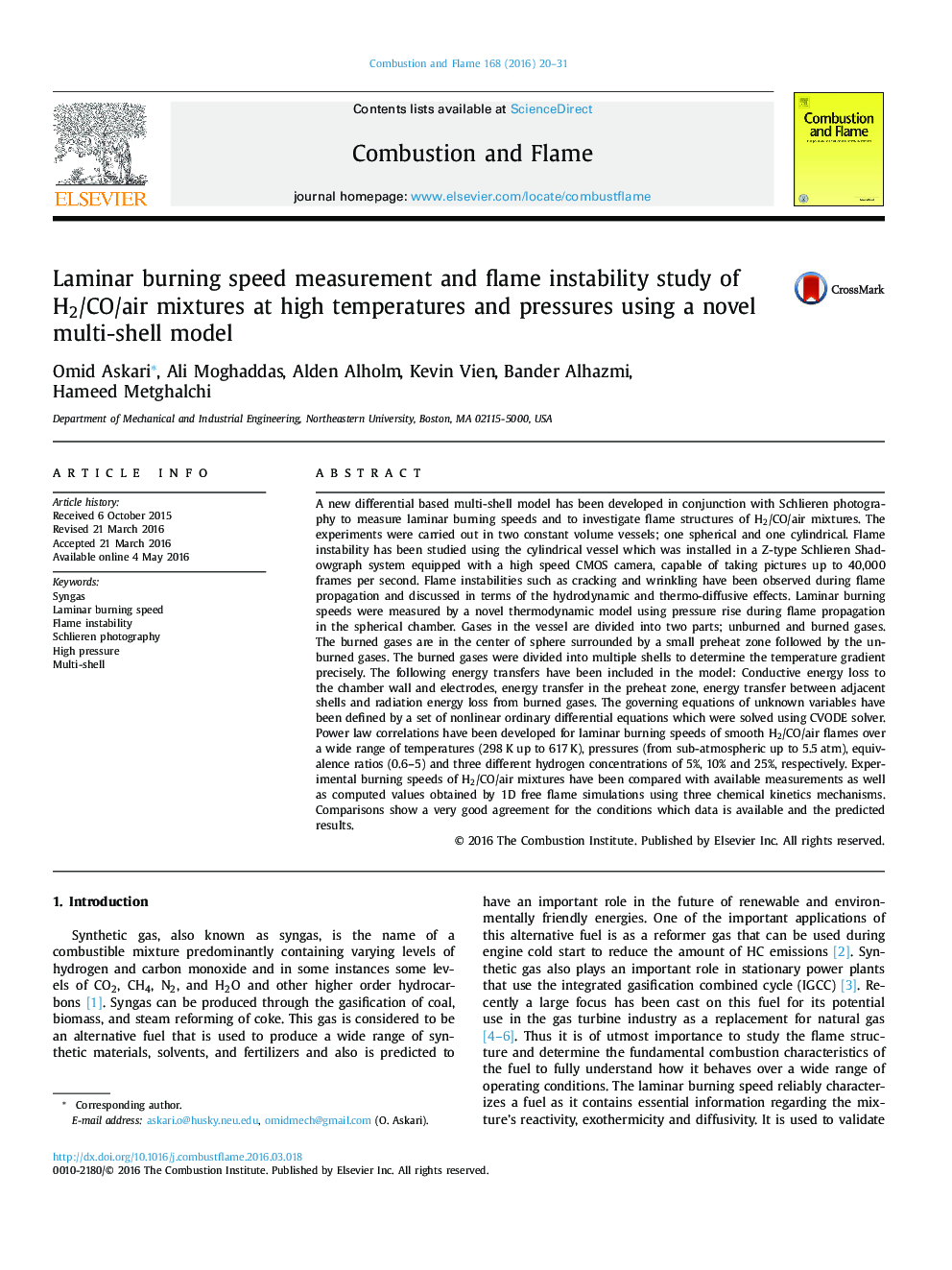| Article ID | Journal | Published Year | Pages | File Type |
|---|---|---|---|---|
| 6594011 | Combustion and Flame | 2016 | 12 Pages |
Abstract
A new differential based multi-shell model has been developed in conjunction with Schlieren photography to measure laminar burning speeds and to investigate flame structures of H2/CO/air mixtures. The experiments were carried out in two constant volume vessels; one spherical and one cylindrical. Flame instability has been studied using the cylindrical vessel which was installed in a Z-type Schlieren Shadowgraph system equipped with a high speed CMOS camera, capable of taking pictures up to 40,000 frames per second. Flame instabilities such as cracking and wrinkling have been observed during flame propagation and discussed in terms of the hydrodynamic and thermo-diffusive effects. Laminar burning speeds were measured by a novel thermodynamic model using pressure rise during flame propagation in the spherical chamber. Gases in the vessel are divided into two parts; unburned and burned gases. The burned gases are in the center of sphere surrounded by a small preheat zone followed by the unburned gases. The burned gases were divided into multiple shells to determine the temperature gradient precisely. The following energy transfers have been included in the model: Conductive energy loss to the chamber wall and electrodes, energy transfer in the preheat zone, energy transfer between adjacent shells and radiation energy loss from burned gases. The governing equations of unknown variables have been defined by a set of nonlinear ordinary differential equations which were solved using CVODE solver. Power law correlations have been developed for laminar burning speeds of smooth H2/CO/air flames over a wide range of temperatures (298Â K up to 617Â K), pressures (from sub-atmospheric up to 5.5Â atm), equivalence ratios (0.6-5) and three different hydrogen concentrations of 5%, 10% and 25%, respectively. Experimental burning speeds of H2/CO/air mixtures have been compared with available measurements as well as computed values obtained by 1D free flame simulations using three chemical kinetics mechanisms. Comparisons show a very good agreement for the conditions which data is available and the predicted results.
Related Topics
Physical Sciences and Engineering
Chemical Engineering
Chemical Engineering (General)
Authors
Omid Askari, Ali Moghaddas, Alden Alholm, Kevin Vien, Bander Alhazmi, Hameed Metghalchi,
